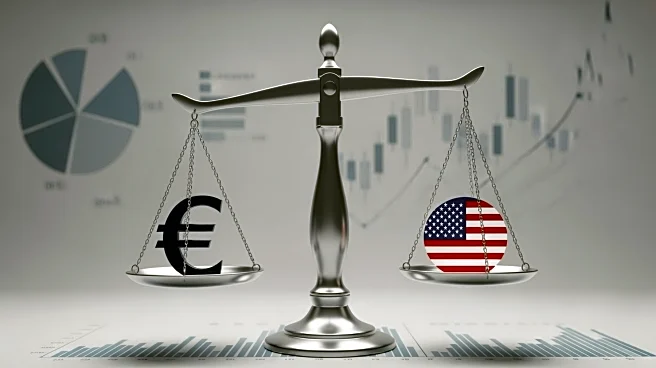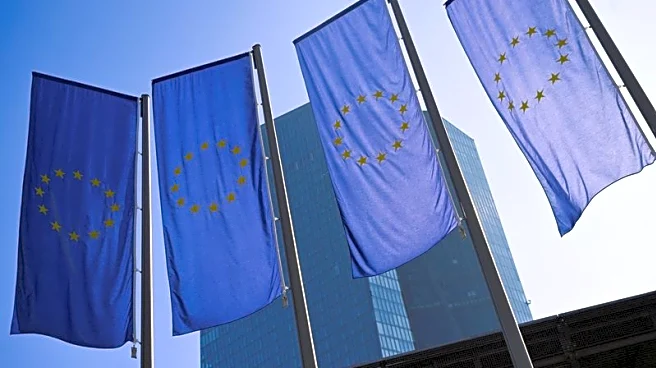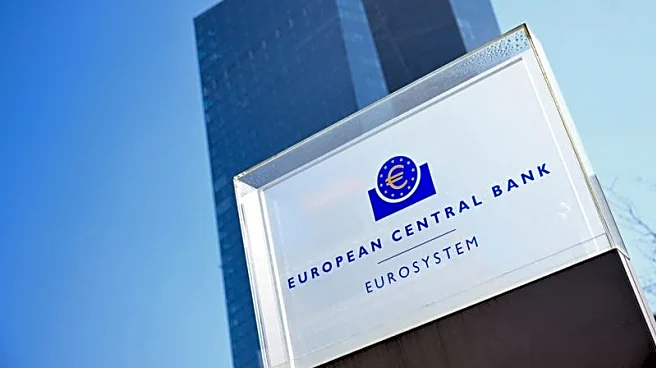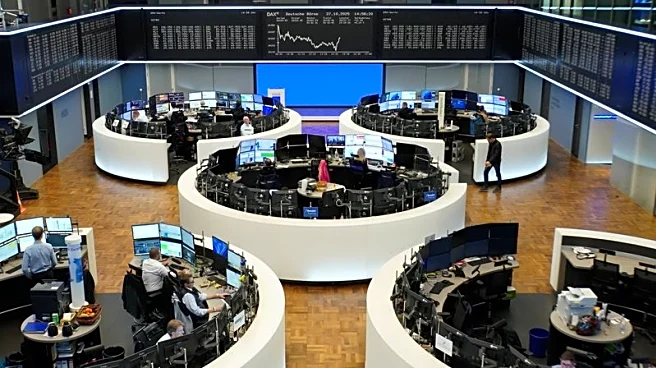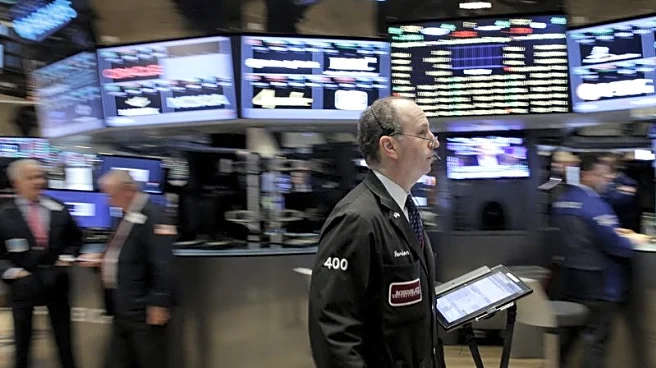What's Happening?
The European Central Bank (ECB) has decided to keep its key interest rates unchanged, maintaining the deposit rate at 2% for the third consecutive meeting. This decision comes as inflation remains under
control, with the rate at 2.2% in September, slightly above the ECB's target of 2%. Despite the challenging global environment, including higher U.S. tariffs imposed by President Trump, European businesses have shown resilience. ECB President Christine Lagarde emphasized the need for ongoing reforms to enhance Europe's economic competitiveness, particularly in light of increasing competition from China. The ECB's decision contrasts with the U.S. Federal Reserve's recent rate cut, highlighting differing approaches to economic growth and inflation management.
Why It's Important?
The ECB's decision to hold interest rates steady is significant for the European economy, as it reflects confidence in the region's ability to manage inflation and economic growth despite external pressures. The higher U.S. tariffs pose a challenge to European exports, potentially impacting industries reliant on international trade. The ECB's stance suggests a focus on stability and gradual growth, which could influence investment strategies and economic policies across Europe. The decision also underscores the importance of structural reforms to boost competitiveness and innovation, which are crucial for long-term economic resilience.
What's Next?
Looking ahead, the ECB plans to continue monitoring economic indicators closely, with future rate decisions contingent on evolving data. The bank's approach suggests a cautious optimism, with potential rate adjustments depending on inflation trends and economic performance. The ECB's focus on reforms may lead to policy initiatives aimed at reducing bureaucracy and fostering investment. Additionally, the ongoing trade tensions with the U.S. could prompt further diplomatic efforts to mitigate tariff impacts and strengthen economic ties.
Beyond the Headlines
The ECB's decision highlights broader geopolitical dynamics, including the impact of U.S. trade policies on global economic stability. The emphasis on reforms points to a strategic shift towards enhancing Europe's competitive edge in the face of global challenges. This development may influence future policy discussions on trade, investment, and innovation, shaping the economic landscape in Europe and beyond.
